On June 9th, at 5:30am, I was in Durban at a start line of Comrades Marathon. In the next 12 hours, I needed to cover 53.4 miles with 5700ft of elevation gain. While Chariots of Fire was playing and the race was about to start, I was wondering if what I planned was doable or just outright stupid.
Choices that led me to this point in life
Around the time I started running seriously, I got very fascinated by extremely long-distance running (partially by reading the books of Dean Karnazes and Scott Jurek). Initially, it felt like some super-human feat, but over time after watching enough YouTube videos, listening to SWAP and other podcasts, and talking to running friends, it became apparent that ultra-running is quite accessible to normal people, especially if the goal is to merely finish within a cut-off time rather than being truly competitive. At that point, knowing my tendencies to “go long” that originate in the childhood, it was only a matter of time until I would attempt my first ultra.
I don’t remember where or when I heard about Comrades Marathon for the first time, but pretty quickly I felt in love with the idea of doing it, for the following reasons:
- It’s a road race, not trail: I love trails for easy or long runs, but the idea of running fast (especially downhill) on a trail to this day terrifies me.
- It’s in beautiful South Africa.
- The cut-off of 12 hours, while likely doable, felt like one would need to work for it and take it seriously.
- Everyone who participated in Comrades pointed out great organization and amazing atmosphere (spoiler alert: both are very much true!).
- There is no elaborate lottery and anyone can easily register for it and participate (you need to run a marathon under 4:50, which I knew I could do fairly easily): this year, almost 19 000 people ended up on the start line!
Overall, this was all great and fun, but when it came to it: can I really run 53 miles (~2 marathons back to back) with 5700ft elevation gain (a particularly scary part) in 12 hours (this is a long time on feet, many things can go wrong in this amount of time)? This was a bit terrifying, but also exciting.
Training
In general, the biggest difference between ultras and shorter events (marathons and shorter) is the number of things that can go wrong. Running a fast marathon, while very hard physically (any time I think that just a couple of months ago, I could run 26 sub-8-minute miles back to back, it blows my mind!), is fairly straightforward and well-understood: it’s an olympic sport after all. At the same time in the ultra, running fitness is just one aspect, but the following are also very important:
- Fueling and hydration/electrolytes
- Cooling
- Preventing mechanical damage (injuries, blisters, busted toenails)
- Fatigue resistance (it has several aspects, but in general if you run for many hours, your brain tends to get fuzzy, which can push you towards sub-optimal decisions, which in turn can make everything spiral out of control)
- If elevation gain is significant, smart(er) pacing and switching to walking in the right times become crucial
- Running an ultra is largely mental: you start feeling discomfort relatively early on, and you still need to carry on for many hours
- The following don’t apply to Comrades, but other relevant factors might be: using poles, adjustment to the altitude, night running, sleeping, crewing, logistics and many others! Ultras are truly multi-factorial.
At the same time, during the training, running very long distances is simply not practical or even productive: before running Comrades, I never raced anything longer than a marathon and ran more than 25 miles in training. This has two implications:
- This “embracing the unseen” aspect of ultras is there, and you need to deal with it. When you train for a marathon, you might run 20-24 miles in training, and while this still leaves you with 6 miles of “unknown”, it’s much easier to process or even picture it than 30 miles of the same.
- I would highly recommend working with a coach who is an expert in ultras. At this point, for 1.5 years I work with Lindsey Herman who is a great ultra-runner herself, and her guidance was absolutely crucial for me (but perhaps even more so, her conviction that I’m truly ready for the race, and there is nothing to worry about or overthink liked I tend to).
- If you can’t get a coach, I highly recommend the book “Training Essentials for Ultrarunning”. Recently the author caught some flak (rightfully) for inappropriate behavior online, but the book is still a great resource.
Base training
Most of the year, Lindsey is programming some variation of base training, which looks very simple while being very effective:
- 6 training days a week with relatively high total mileage (~60 miles starting the beginning of 2024)
- long run (~16 miles) followed the next day by a medium-long run (usually 10-12 miles)
- strides a couple of times a week (hill or flat)
- one speed work-out (again, on hills or flats, tempo or more intense)
- cross-training double (I’m doing an indoor bike trainer for that)
It took me a few years to reach the point that I can follow the above blueprint week after week without accumulating injuries or too much fatigue, but the nice thing about distance running is that you simultaneously optimize your performance for all distances, so you can race a decent 5K and an ultra off of something like this.
Specificity
Since Comrades was meant to be the main race for this year, we did a few-week-long block of specificity for it. In the context of an ultra, this meant the following:
- Increase long runs (both volume and intensity), and do them back-to-back on weekends. For me specifically this meant the following sequence:
- (7 weeks out) 20 miles easy/moderate with 15 minutes moderate/hard after a warm-up, 10 miles easy the next day
- (6 weeks out) 22 miles easy, 10 miles easy the next day
- (5 weeks out) 18 miles easy/moderate with 40 minutes moderate/hard after a warm-up, 12 miles easy the next day
- (4 weeks out) 16 miles easy, 13 miles easy on trails the next day
- (3 weeks out) 25 miles easy/moderate, 14 miles easy the next day (this was a peak week of 68 miles with 7000+ft elevation gain + 30 minutes of cross-training)
- (2 weeks out) 18 miles easy/moderate with 30 minutes moderate/hard after a warm-up, had to skip the run the next day due to flared up Achilles, thankfully it was fully healed in a matter of days
- Uphill treadmill: run very slowly (think 4mph) but with a very steep incline (10-15%). A few of these sessions was enough to adapt to climbing decently well.
- Overall, embrace the elevation gain during the runs (at least, don’t avoid it).
I should say that doing these hard long runs week after week built quite a bit of fatigue, but that was precisely the point. But let me say again: this specificity is a cherry on the cake, nothing beats doing the base training week after week in a sustainable manner.
I did a couple of these long weekends in nice fun locations (specifically, Port Angeles, WA and Coeur d’Alene, ID), and it was a great way to break up the inevitable monotony of the training.
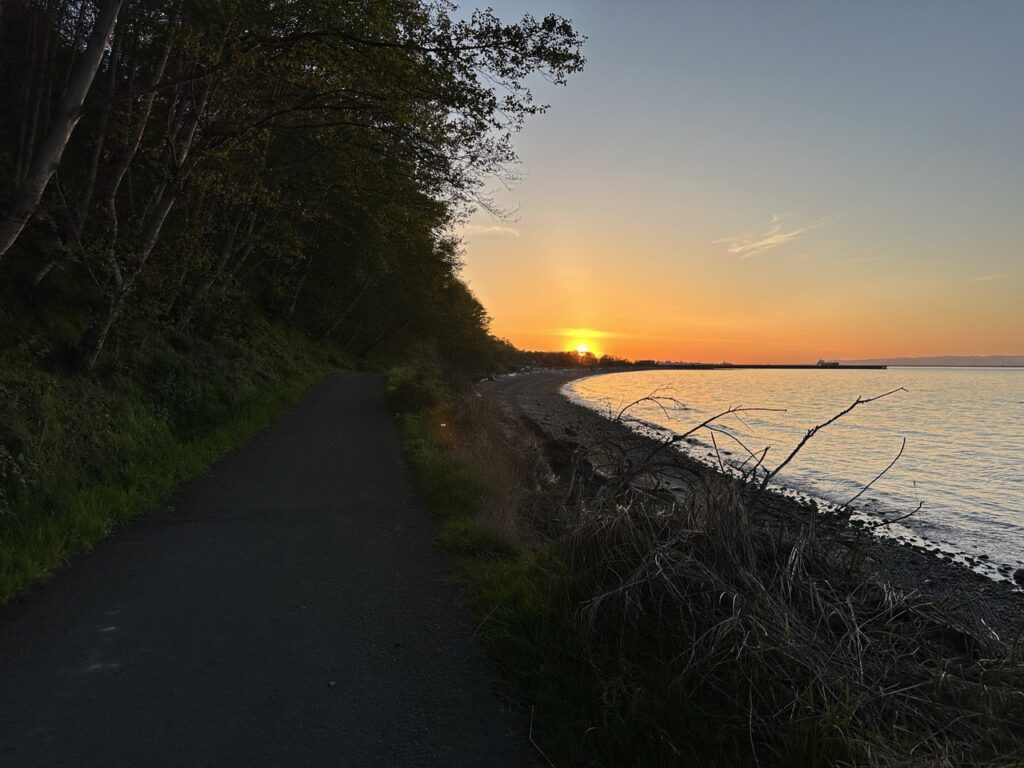
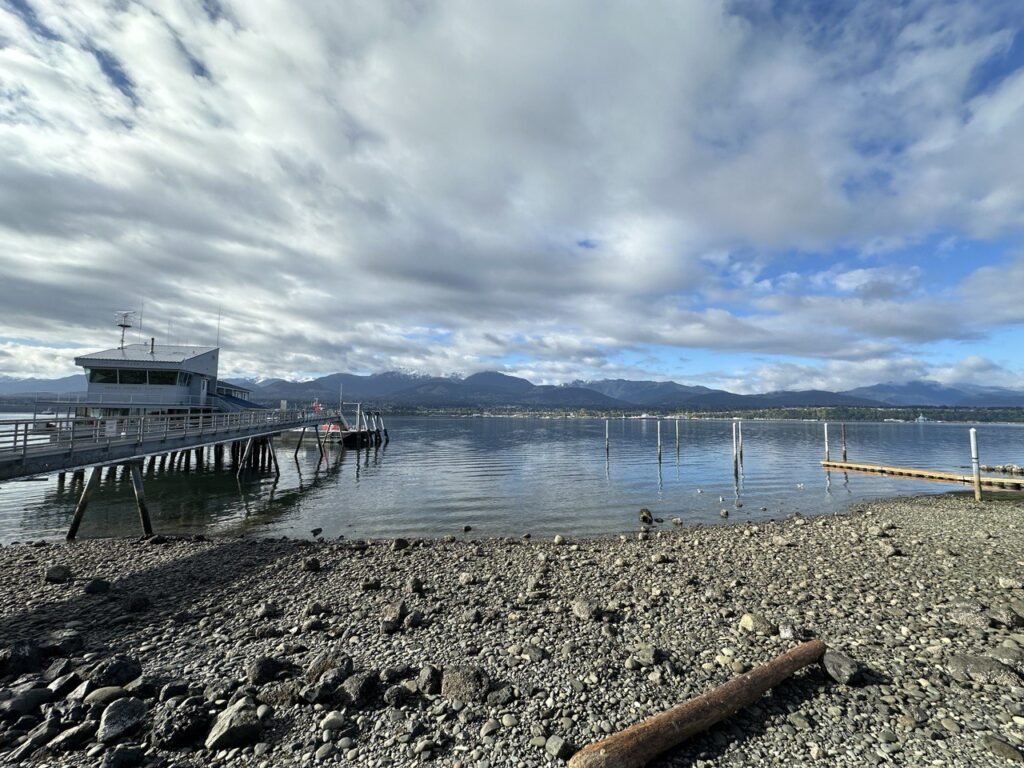
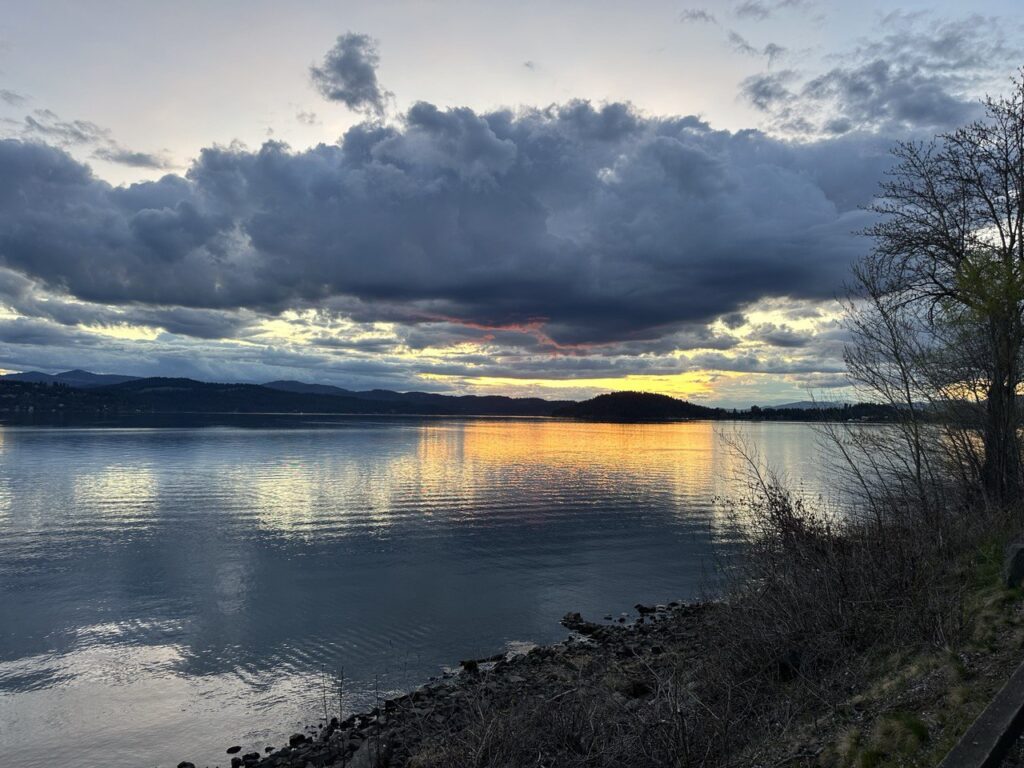
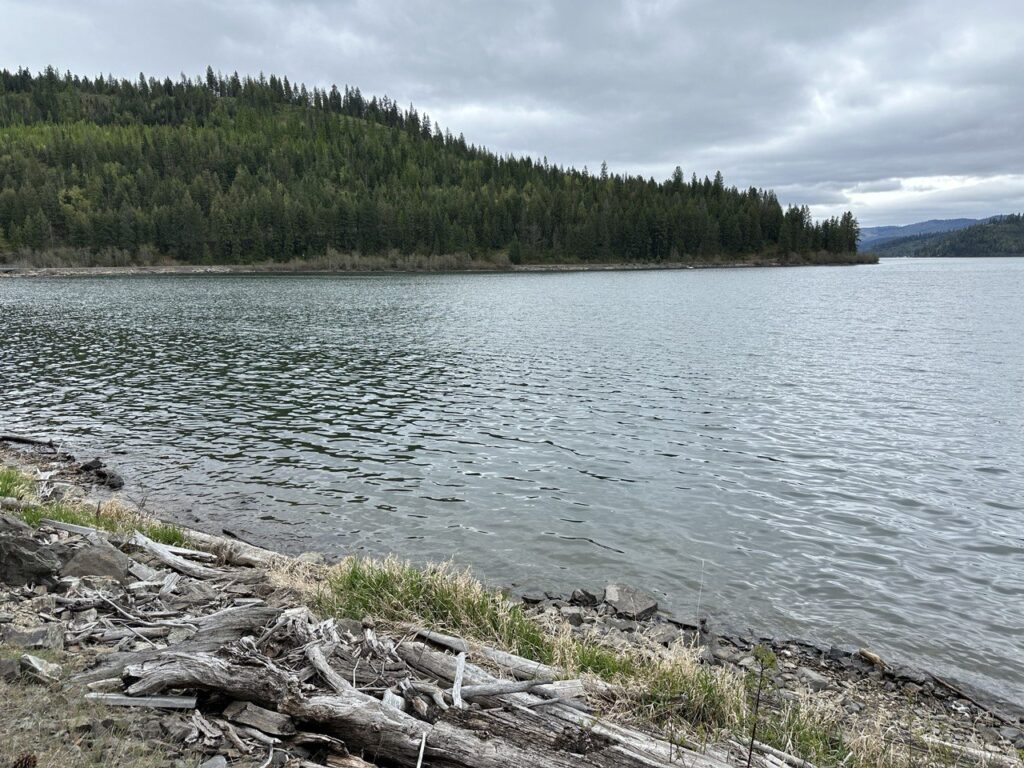
Trip to South Africa
I don’t want to focus too much on the trip itself in this post, but in short, I highly recommend visiting South Africa. The nature is absolutely beautiful, people are very nice, but at the same time the country has a very complicated history which leads to many of the present-day problems. Being exposed to some of them (in a controlled setting) was very eye-opening.
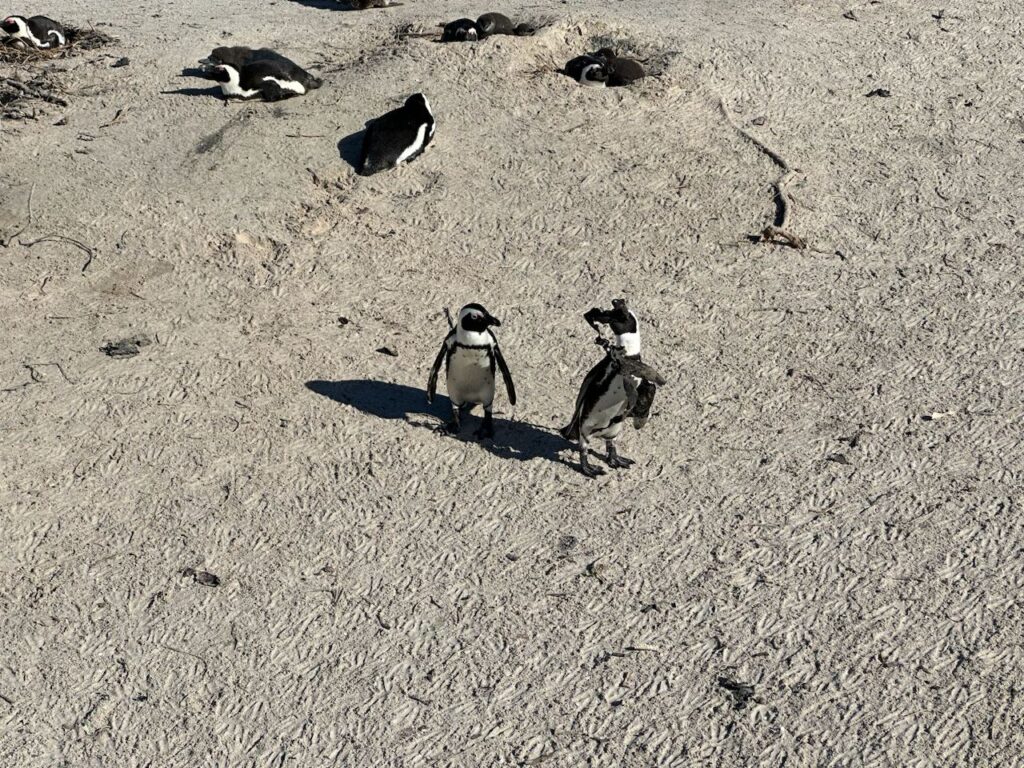
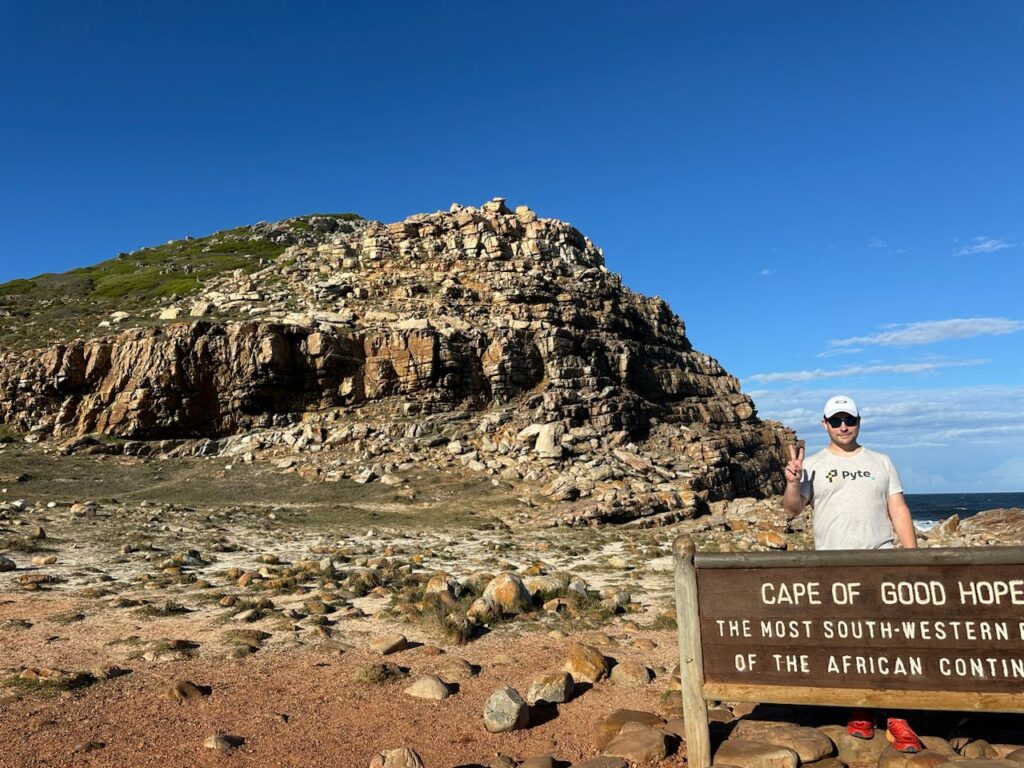
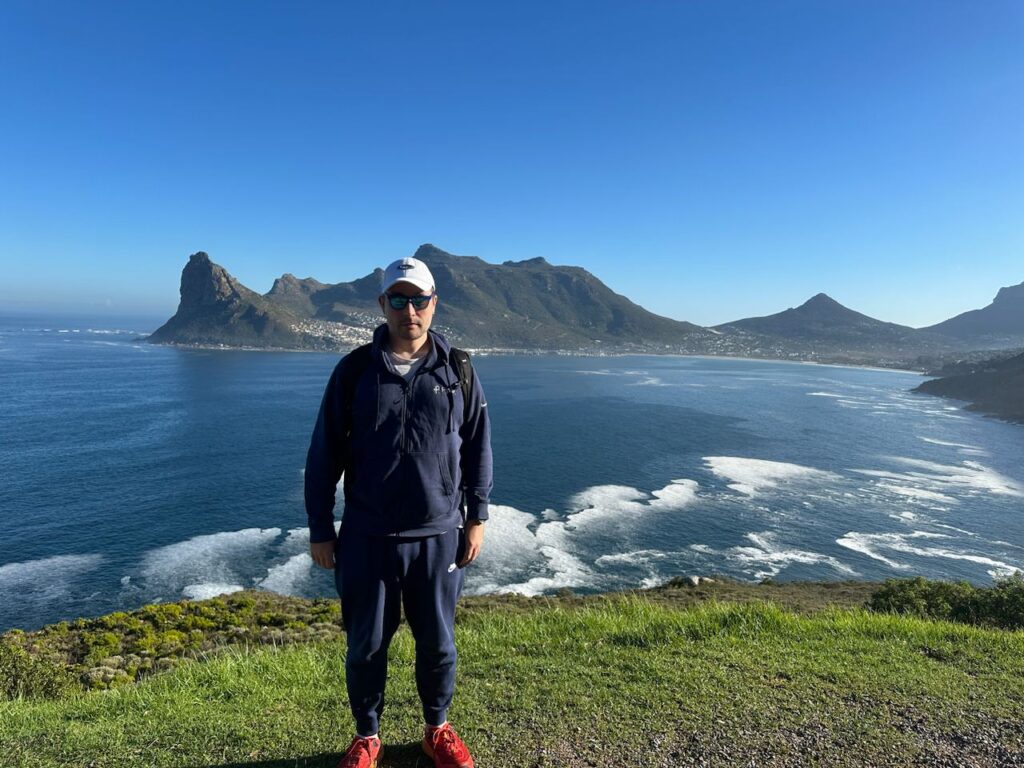
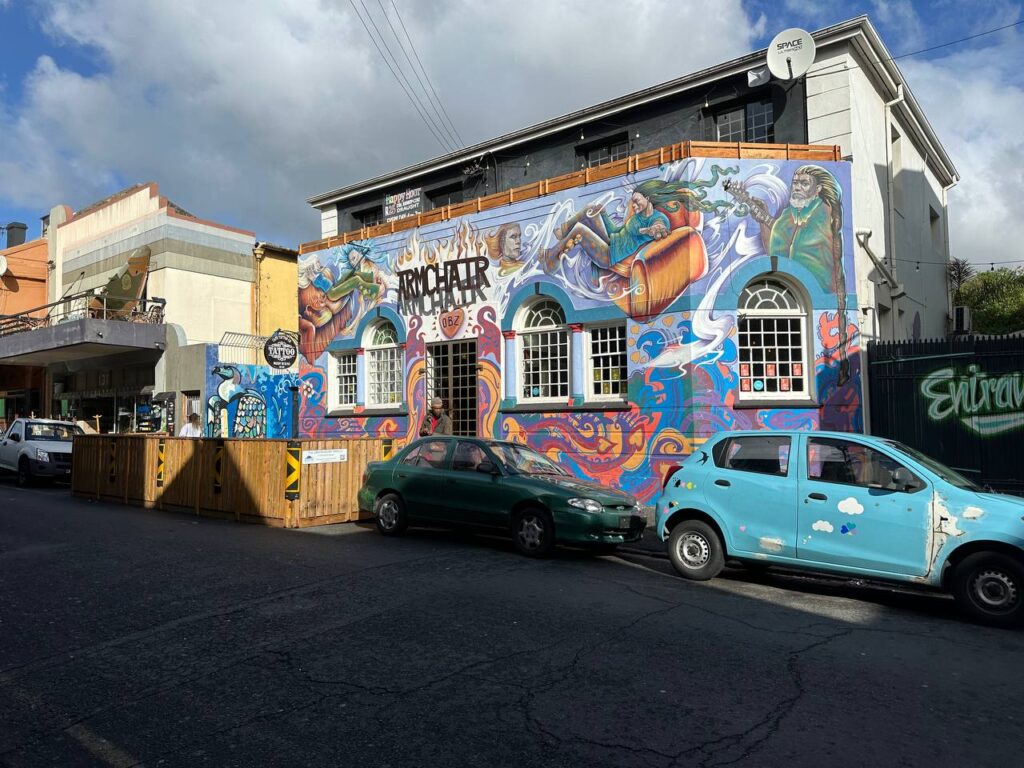


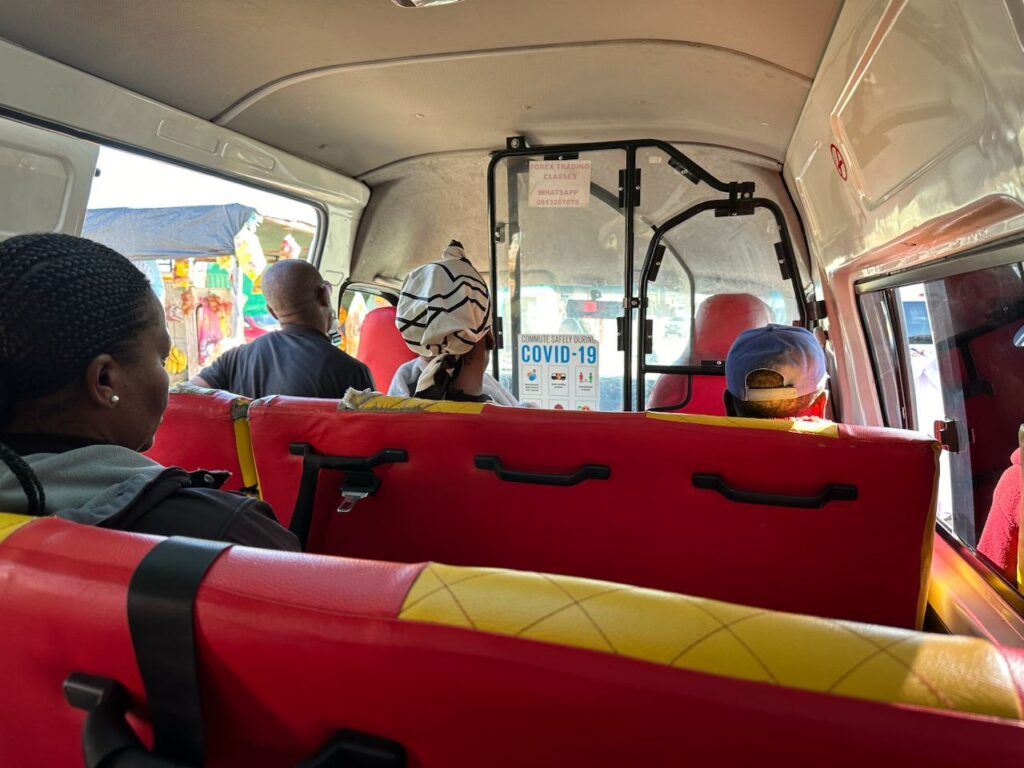
Race
The race itself, as perhaps expected, was absolutely beautiful and brutal at the same time. Before the start my A goal was to finish under 10 hours, and I was barely able to accomplish it with the time 9:56:17 (which puts me around 35-th percentile within everyone who started the race, the field was very strong!). This time earned me Robert Mtshali medal, which is my first non-participation running trophy! But overall the race was definitely hard physically (my poor legs were absolutely dead after all the climbing and descending), but even more so mentally: after 2-3 hours you already feel pretty uncomfortable with all the climbing you need to do in the beginning, but you know you need to keep going in this or worse state for 7-8 more hours, which definitely requires some optimism and perseverance to proceed.
But while hard, the race was definitely (type-2-fun?) enjoyable: you share your “suffering” with people around you and support each other plus it was very rewarding to keep finding mental resources to keep pushing and realize that you can do it.
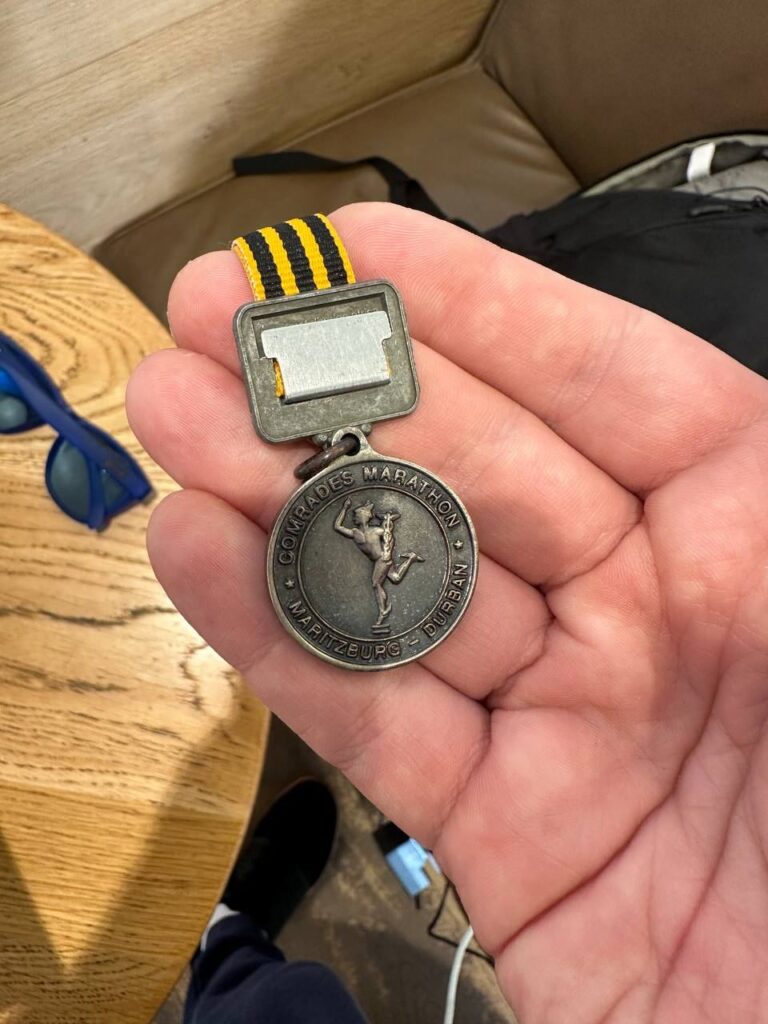
What went well
- To my great surprise, I didn’t have any injuries or other mechanical damage (blisters, chafing, damaged nails etc). Even on the cramps side, I only had a minor cramp around one kilometer to go, but it went away in a few seconds after I slowed down.
- I got the cooling right: kept dumping water on my head and on a bandana around my neck constantly. It was not too hot, but it was quite warm and sunny, so without cooling, the performance would definitely suffer.
- Invested time early on in certain things before they backfire (take a proper bathroom break, fix socks and shoelaces etc.)
- Didn’t really feel any mental lows, despite all the hardness, it was never frustrating or overwhelming at any point of time, thanks to the crowds around me.
- I was able to run all the flats and downhills at a fairly decent pace.
- Even when walking (steeper uphills), I did it at a fairly brisk pace.
What didn’t go well
The only (but absolutely crucial) part that didn’t go as planned was fueling and hydration. My initial plan was to try to take around 300 calories per hour and whatever water I need with an appropriate amount of electrolytes (around 1000mg/L of sodium). However, after 4 hours or so, it became increasingly hard to do so. There were several reasons for this: one being that travel (and more specifically, tap water in South Africa) was not particularly conducive to stomach feeling particularly good, second, some specific product was not working well in warm weather after N hours of running. So, for the last 6 or so hours, my fueling and electrolytes intake was not very consistent. Thankfully, it didn’t lead to any serious problems (even cramps), but I need to go back to the drawing board. I’m sure if I could fuel the race properly, I would need to walk way less overall.
Aftermath
After the race my legs were absolutely shredded, as perhaps expected. However, by Friday the soreness was more or less gone, and now I need to recover on the cellular level. After marathons, it takes around 4-5 weeks, let’s see how it will go here. So far I’ve done one hike and three runs, and I could still feel quite a bit off (both in terms of subjective feeling and stats (heart rate)).
Conclusion
So, is running an ultra worth it? It depends on a personality. For someone like me, who likes the grind, covering long distances and putting myself in uncomfortable spots, the answer is resounding YES. I can’t wait to learn from my Comrades experience to be even better prepared next time to cover some absurd distance on a road, trail or in the mountains. I’m already thinking what my next adventure will be, which is a sure sign that this one went incredibly well. Stay tuned!